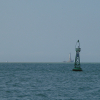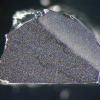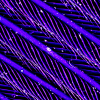Bruce Yardley and David Banks
School of Earth and Environment, University of Leeds, Leeds LS2 9JT, UK
Introduction
The whole natural cycle of our planet depends on processes going on beneath our feet, which create magmas, move tectonic plates, raise mountains and drive the continual recycling of rock materials. That this happens at all reflects the presence of water deep in the Earth’s crust.
While dry rocks are extremely strong and inert up to temperatures close to melting, the presence of even small amounts of water allows them to deform and flow, and permits minerals to dissolve and precipitate, which in turn concentrates metals into ore bodies. Such deep fluids are beyond the reach of sampling by drilling, and in any case, earth scientists are often interested in investigating what happened many millions of years ago, early in the Earth’s history. They are, however, preserved as tantalisingly small fluid inclusions (mostly ranging from < 2 µm to c. 20 µm across) in the minerals that grew from them.
The scientific study of fluid inclusions goes back to the middle of the 19th century, when Henry Clifton Sorby, a pioneer of using a microscope to study rocks, recognised that many of the granites and other crystalline rocks he was studying contained small bubbles of water in their quartz crystals, mostly with a small vapour bubble and, in some cases, salt crystals. Geochemists have sought for years to find techniques that would allow them to analyse the contents of these small liquid bubbles, but the challenge is formidable. The inclusions are very small indeed; it is often obvious from their appearance and behaviour when frozen that not all the fluid inclusions in a sample have the same composition, so crushing up a large mineral sample to extract all the fluid may give a meaningless mixture, and they are inevitably hosted by a mineral that will contaminate, and may dominate, any analysis. After the progressive development of techniques that yielded results for optimal samples, Laser Ablation Inductively Coupled Plasma Mass Spectrometry (LA-ICP-MS) has at last provided a means of analysing individual fluid inclusions in typical, rather than exceptional, samples.
The first truly quantitative LA-ICP-MS analyses of single fluid inclusions were carried out in ETH Zurich in a group led by Christoph Heinrich and Detlef Gunther. They addressed the key issues of ablating into transparent host crystals to release fluid in a controlled manner, minimising interferences and finding suitable calibration strategies, while at the same time quantifying a signal that is typically released over a time of just a few seconds, giving a brief surge in the signal but no definite plateau. The laboratory we have built up in Leeds is based on theirs, but we have significantly developed the data handling.











